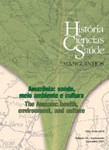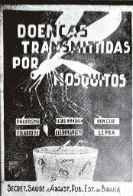March 2020
In order to understand healthcare assistance in nineteenth century Brazil, Rogério Siqueira, from Colégio Cave (Juiz de Fora, Minas Gerais), and Maria Renilda Barreto, professor at Centro Federal de Educação Tecnológica Celso Suckow da Fonseca (CEFET, Rio de Janeiro), examine the Zona da Mata region in the state of Minas Gerais as a potential laboratory for uncovering the different facets of the Brazilian experience.

Halfeld park in Juiz de Fora — Source: Museum Mariano Procópio/Archives
In “The limits of healthcare assistance in the nineteenth century: the urban case of Juiz de Fora (Minas Gerais state)”, the researchers discuss the mechanisms of healthcare organization in the city of Juiz de Fora, in the second half of the nineteenth century. They investigate the arrangements organized to provide care for the sick and how this structure adapted to the demands of the socio-political and economic scenario.
The region was chosen due to its agricultural functionality, involved in coffee production, and which relied extensively on slave labor. Assistance for dealing with social issues in nineteenth century Juiz de Fora, namely healthcare and the poor, was provided through three channels: the first combined elements of philanthropy from the elites and the actions of the municipality; the second occurred in the private domain, linked to slaveholding; and the last – charity − was long-term, part of what the research identifies as “the salvation economy”.
The time period studied embraces a time of accommodation and crisis in the Brazilian imperial political system, which was filled with debates over the slave labor regime while a gradual change in the urban context occurred, marked by the growth of cities, with displacement of the population due to the end of slavery and due to the arrival of immigrants. Capital from agriculture also financed the development of industry and the growth of services, significantly altering the urban landscape and the rearranging power, prestige and healthcare at the end of the nineteenth century and the early twentieth.
“Until slavery was abolished in Brazil, the healthcare facilities of small towns in agricultural regions − the agrarian elite had homes in the city but lived in the countryside − were of little significance. In Juiz de Fora, the creation of the House of Charity was more of a political bargaining chip than a modern hospital”, observe the researchers.
All of these changes are related to the reconfiguration of healthcare assistance after abolition. During this period, it was the urban worker who fell into poverty due to some physical, moral, or intellectual disability or old age who needed assistance. As such, the history of the Minas Gerais Zona da Mata reveals the unique characteristics of a region where the slave-holding experience transformed and redefined the forms of healthcare organization in nineteenth century Brazil.
Read the full article:
Siqueira, Rogério and Barreto, Maria Renilda. The limits of healthcare assistance in the nineteenth century: the urban case of Juiz de Fora (Minas Gerais state). Hist. cienc. saude-Manguinhos, vol.26, suppl.1. Dec 2019.









